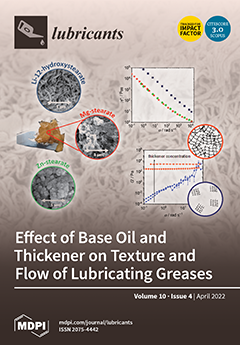The hunt for environmentally friendly cutting fluids is underway as the problems of conventional cutting fluids become more evident. To achieve environmentally conscious machining, the current study examines the use of Mango Kernel Seed Oil (MKSO) as a cutting fluid during the turning
[...] Read more.
The hunt for environmentally friendly cutting fluids is underway as the problems of conventional cutting fluids become more evident. To achieve environmentally conscious machining, the current study examines the use of Mango Kernel Seed Oil (MKSO) as a cutting fluid during the turning of AISI 1525 steel. According to the 2
4 complete factorial techniques, the vegetable-oil-based cutting was produced by dissolving four different additives in mango kernel seed oil: emulsifying, antimicrobial, anti-corrosive, and antifoam substances. Afterward, the formulated vegetable oil was characterized both physically and chemically to determine its capability. The developed MKSO was mechanically evaluated using a Taguchi L
9 orthogonal array. Spindle speed, depth of cut, and feed rate served as the input parameters, while surface roughness, cutting temperature, machine sound level, and machine vibration rate were the responses. Taguchi-based Grey Relational Analysis was used to perform multi-objective optimization. It was used to determine the best machining conditions. The best parameters for mango kernel seed oil are a spindle speed of 0.683 rev/min, feed of 0.617 mm/rev, and depth of cut of 0.620 mm, while the optimum parameter for Mineral-Oil-based Cutting Fluid (MOCF) is 0.7898 rev/min spindle speed, 0.6483 mm/rev feed, and a 0.6373 mm depth of cut. This research revealed that, when compared to the feed rate and the depth of cut, the spindle speed has the highest influence on multi-responses in turning operations with both cutting fluids. Generally, MOCF outperformed mango kernel seed cutting fluid in most machining conditions.
Full article





